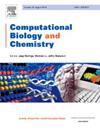Unveiling the distinctive variations in multi-omics triggered by TP53 mutation in lung cancer subtypes: An insight from interaction among intratumoral microbiota, tumor microenvironment, and pathology
IF 2.6
4区 生物学
Q2 BIOLOGY
引用次数: 0
Abstract
The TP53 mutation is one of the most common gene mutations in non-small cell lung cancer (NSCLC) and plays a significant role in the occurrence, development, and prognosis of both lung adenocarcinoma (LUAD) and lung squamous cell carcinoma (LUSC). Recent studies have also suggested the predictive value of TP53 mutations in the response to immunotherapy for NSCLC. It is known that intratumoral microbiota, tumor immune microenvironment (TIME) and histology are associated with the roles of TP53 mutation in NSCLC. However, the intrinsic associations among these three factors and their underlying interaction with TP53 mutation are not well understood. Additionally, the potential of predicting TP53 mutations using deep learning methods has not yet been fully evaluated. In this paper, we comprehensively evaluated the tissue microbiome, host gene expression characteristics, and histopathological slides of 992 NSCLC patients obtained from the cancer genome atlas (TCGA) and validated the findings using multi-omics data of 332 NSCLC patients from the Clinical Proteomic Tumor Analysis Consortium (CPTAC). Compared to LUSC, LUAD exhibited more substantial differences between patients with and without TP53 mutation in all three aspects. In LUAD, our results imply underlying links between the tissue microbiome and immune cell components in the TIME, and show that the abundance of immune cells is reflected in histology slides. Furthermore, we propose a novel multimodal deep learning model that focuses on histopathology images, which achieves an area under the curve (AUC) of 0.84 in LUAD. In summary, TP53 mutation of LUAD resulted more significant changes in intratumoral microbiota, TIME and histology than that of LUSC. And histopathology images can be used to predict TP53 mutation in LUAD with reasonable accuracy.
揭示肺癌亚型中 TP53 突变引发的多组学独特变化:洞察瘤内微生物群、肿瘤微环境和病理学之间的相互作用。
TP53 突变是非小细胞肺癌(NSCLC)中最常见的基因突变之一,在肺腺癌(LUAD)和肺鳞癌(LUSC)的发生、发展和预后中起着重要作用。最近的研究还表明,TP53 基因突变对 NSCLC 免疫疗法的反应具有预测价值。众所周知,瘤内微生物群、肿瘤免疫微环境(TIME)和组织学与 TP53 突变在 NSCLC 中的作用有关。然而,这三个因素之间的内在联系及其与 TP53 基因突变之间的潜在相互作用还不十分清楚。此外,利用深度学习方法预测 TP53 突变的潜力尚未得到充分评估。在本文中,我们全面评估了从癌症基因组图谱(TCGA)中获得的992名NSCLC患者的组织微生物组、宿主基因表达特征和组织病理学切片,并利用临床蛋白质组肿瘤分析联盟(CPTAC)中332名NSCLC患者的多组学数据验证了这些发现。与LUSC相比,有TP53基因突变和没有TP53基因突变的LUAD患者在所有三个方面都表现出更大的差异。在LUAD中,我们的研究结果表明组织微生物组与TIME中的免疫细胞成分之间存在潜在联系,并显示免疫细胞的丰度反映在组织学切片中。此外,我们还提出了一种新型多模态深度学习模型,该模型侧重于组织病理学图像,在 LUAD 中的曲线下面积(AUC)达到了 0.84。总之,TP53突变导致LUAD的瘤内微生物群、TIME和组织学发生了比LUSC更显著的变化。组织病理学图像可用于预测LUAD的TP53突变,准确性较高。
本文章由计算机程序翻译,如有差异,请以英文原文为准。
求助全文
约1分钟内获得全文
求助全文
来源期刊

Computational Biology and Chemistry
生物-计算机:跨学科应用
CiteScore
6.10
自引率
3.20%
发文量
142
审稿时长
24 days
期刊介绍:
Computational Biology and Chemistry publishes original research papers and review articles in all areas of computational life sciences. High quality research contributions with a major computational component in the areas of nucleic acid and protein sequence research, molecular evolution, molecular genetics (functional genomics and proteomics), theory and practice of either biology-specific or chemical-biology-specific modeling, and structural biology of nucleic acids and proteins are particularly welcome. Exceptionally high quality research work in bioinformatics, systems biology, ecology, computational pharmacology, metabolism, biomedical engineering, epidemiology, and statistical genetics will also be considered.
Given their inherent uncertainty, protein modeling and molecular docking studies should be thoroughly validated. In the absence of experimental results for validation, the use of molecular dynamics simulations along with detailed free energy calculations, for example, should be used as complementary techniques to support the major conclusions. Submissions of premature modeling exercises without additional biological insights will not be considered.
Review articles will generally be commissioned by the editors and should not be submitted to the journal without explicit invitation. However prospective authors are welcome to send a brief (one to three pages) synopsis, which will be evaluated by the editors.
 求助内容:
求助内容: 应助结果提醒方式:
应助结果提醒方式:


